More than 75 years after the Battle of Stalingrad the people of the city are still struggling with the past, writes Maria Dobroskokina. Memories of the big battle are everywhere, not only in ‘hurrah patriotism’ of the official propaganda but also in the daily life of the citizens. This focus on history hampers much needed new perspectives on the future of Volgograd.
Volgograd is probably the only Russian city (together with Moscow and St-Petersburg) which is well known abroad. You only need to use its old name: Stalingrad. No matter how long ago the Battle of Stalingrad (August 1942 – February 1943) was fought, the bloodiest battle of the 20th century is still more or less known. Therefore it is understandable that this historical and military past still occupies a significant or even central place in people's mind. But in recent years, more and more often the question arises in what kind of format this past should be presented in the modern life of the city.
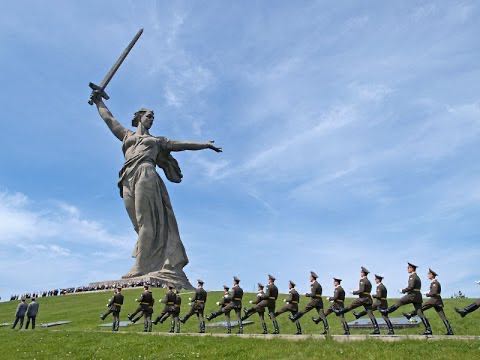
Mamayev Kurgan. Picture Wikimedia
Militarization of memory
The most popular attraction is the 91-meter-high statue The Motherland Calls at the hill Mamayev Kurgan. The Panorama Museum of the Stalingrad Battle is the second important high-light in Volgograd that is connected with the Second World War. Near this museum and at other places in town 17 tanks and other armoured cars are exhibited. This military equipment is almost incorporated landscape. The tank downtown is an ordinary meeting point for the citizens. But when you asked the people, who gather there, about the meaning of the tanks, they quite often answer: ‘I do not know’. For sure, everybody will say that they are related to the war, but about the specifics the citizens know less and less. This is not strange. Every historical event, even a sacred event, has its expiry date.
Nevertheless, the military-historical agenda continues to be the main component in the image of the city as well as in the official propaganda. Last autumn, for example, Duma-deputy Anna Kuvichko played a role in a militaristic video, in which member of parliament sang, surrounded by schoolchildren at Mamayev Kurgan, a song in support of president Putin. ‘Unfortunately for many people historical memory and patriotism equal with militarism quite often,’ says Valery Kotelnikov, an urbanist in Volgograd. ‘Exactly with militarism, so not with the memory of victims, although the Stalingrad Battle memorial complex was created not only for glorifying the heroic deeds of the defenders of Stalingrad, but also in memory of the victims of the war, as a warning against the inadmissibility of repeating such a terrible war, which should be the intention of any military monument. But in Volgograd all monuments are dedicated to military commanders, and not a single one to compatriot who became famous in culture or arts.’
Militarism is more a prerogative of the official propaganda, as showed by the singing politician Anna Kuvichko. This militarism begins to provoke a certain irritation among more and more local residents. But this irritation is quite often not based on historical facts. ‘We need to distinguish emotions and facts,’ says Roman Schoda, a local historian. ‘Emotionally, people are satiated with heroic themes. But if asked who was the commander in the defence of the Mamayev Hill, most will not answer. At the same time, people want to know more about the place they live in. That interest in urban history dates back to the times of Tsaritsyn (name of the city from 1589 till 1925)’.
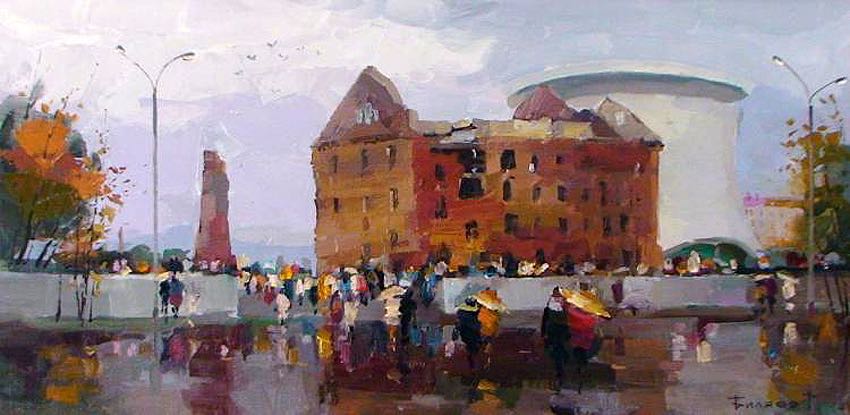
House of Gerhardt Mill and Panorama Stalingrad. Painting Roman Bilyaev
Protection of the past
Contrary to the rather peaceful theme of the history of Tsaritsyn, the military theme is a field where constantly battles are erupting. One example. In August 2013, when the devastating bombing of Stalingrad was commemorated, Russian bikers of the group Night Wolves organized a large patriotic rock-concert. The songs performed at the stage were dedicated to glorify the fighting spirit and achievements of the ancestors, but despite of this goal a significant part of the people in town, regardless of age, called the event of the Night Wolves ‘a dance on the bones’.
The war-history is also regularly used as a means for political speculation. The local branch of the Communist Party of Russia raised the issue of renaming Volgograd back to Stalingrad. Maybe it really makes sense for them, but the timing – always only on the eve of any elections, federal or local – shows that the communists most of all try to get more attention before the voting, especially from the nostalgic generation who was born and spent the most of their life in the former USSR. The Communist Party stopped claiming the old name, after the authorities offered a compromise decision: one day a year, on Victory Day at the 9th of May, Volgograd turns into Stalingrad.
Another topic for discussions is the condition of the monument The Motherland Calls. One said of several years that the statue would be on the verge of destruction. It turned out to be fake-news. But the monument is nevertheless repaired.
The theme of our military heritage again arose last year during the preparations for the 2018 World Cup, that will be hosted by Volgograd too. The park at the foot of the hill Mamayev Kurgan had to be reconstructed, it was said, because almost all the trees had perished. A brand new modern parking lot was planned instead of the park. The result was a scandal that resonated throughout the whole of Russia. According to a lot of (local) historians, the trees in the park were all in good shape. Moreover, they argued, the park of Mamayev Kurgan was on purpose popular also called ‘Widow's Park’, because the first tree there was planted by a resident of Stalingrad in memory of her husband who died in the war. This General Prosecutor’s Office opened an investigation and discovered that the construction-work on the site was conducted with irregularities, although officially the existence of the ‘widow's park’ was not recognized by the prosecutor. The outrage about the parking-plan showed that the park still has a strong and symbolic meaning. ‘The role of Stalingrad in the Second World War is a very powerful tool for the formation of identity. Through the battle the people not only feel engaged with world history, but also understand special role of their hometown in it,’ said Mikhail Anypkin, a sociologist from Volgograd.
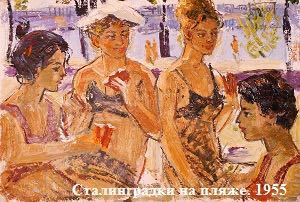
Painting Victor Losev
War or peace?
The Mamayev Kurgan Hill is a symbolic sight. The war-memory is still sacred for Russians, and for Volgograd especially. That seems forever, no matter how much or few the people know about the historical facts. At the same time, the townspeople in the last few years increasingly search also for some new symbols. The city doesn’t know how to cope with this problem.
Roman Shkoda, the local historian: ‘Periodically, contests for a new symbol, a new logo are announced, but they rarely end with success, because this task is much more complicated than it seemed to be before the contest was started.’
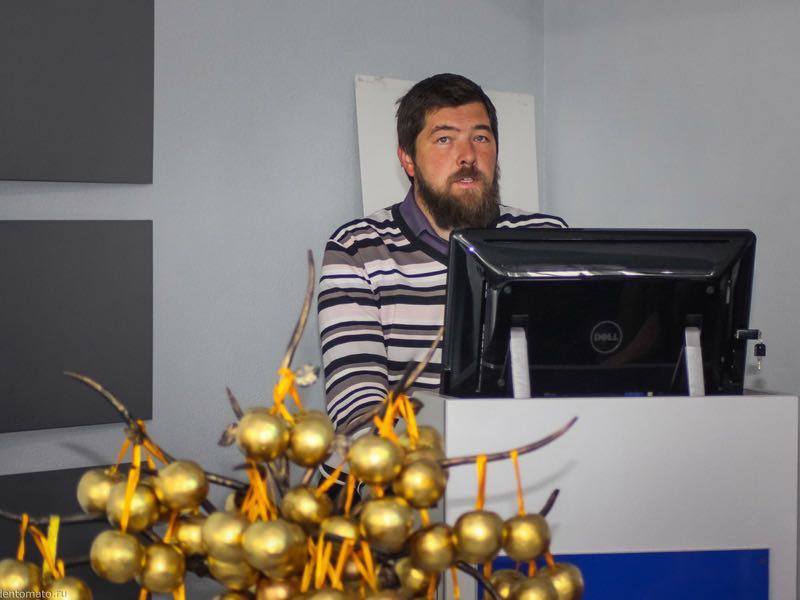
Roman Shkoda, historian from Volgograd
To solve this problem, the authorities tried to take over the production of those new symbols. So, last year the city opened an interactive museum Russia is my history. With multimedia technologies the visitor can get acquainted with the history of Russia, starting from the foundation of country a thousand years ago. According to regional officials, this museum should not only attract tourists, but also local citizens, especially among the youth. But the locals continued to say that they would prefer a park at the site of the museum. Some people criticized the museum, because it’s a copy of a same kind that exists in several other cities, with exactly the same objects and similar content.
A lot of townspeople are sure that the way the war is memorized has outlived itself. This does not mean forgetting the war and destroying monuments –this will never happen. It means that something has to be created for the glory of the peaceful life. Dmitry Boyko, an urbanist, believes that it is not necessary to choose between war and peace: ‘When you are engaged in a substantive, thematic filling of the public space, you should abandon the question whether to do something related to the war or not. A modern approach is to work with a unique local community and its local identity. Then the artistic space is unlimited. Heroism, wars, victories are not the only themes.’
The sociologist Mikhail Anipkin agrees with Boyko. ‘On the one hand, people do not want to live only by the memory of the war. But on the other, it is still a powerful factor in the popular consciousness. Speaking metaphorically, it’s as if you have a plot of land on which 10 hectares is a occupied by cemetery and only 5 hectares by cucumbers and tomatoes. There is no escape from the cemetery, it is there, this fact cannot be ignored. But cucumbers and tomatoes can be planted more intensively. Many people think that by abandoning military history we could improve our daily life. That’s not true. First, it´s not either/or. Secondly, the official propaganda uses only “hurrah-patriotism” without improving the conditions of the real daily life. Symbol of the past should be supported by a real present, by new infrastructure, public spaces or interesting events. Yes, it is necessary to remember the war and the victims of the war. But the people, who live in the city nowadays, also deserve a comfortable environment.’ According to Anipkin, it’s useless to inspire people with great past if they don`t have good living conditions in present.

Mikhail Anipkin, sociologist.
The need to work with local identities have been discussed for a long time. But it’s an one way discussion. There is still no dialogue between the authorities and the community. A vivid example is the story of the Volgograd debarkader, the old floating dock, standing on the rocks at the shore of the river. This atmospheric, romantic and abandoned place was a place where for a lot of citizens gathered. But the administration decided to demolish the dock. After this decision was taken in 2013, a group of activists tried to prevent the destruction. To no avail. A month at the they had started their pressure, the debarkader burnt to the ground. The fire was probably not an ordinary accident. The landing stage was a perfect example of the contradiction between the officials and the citizens.
There are, of course, also good ideas for the future. One of those good plans is the idea to create in Volgograd a special Centre of Public Diplomacy. The proposal is based on the twinning between the cities of Stalingrad and Coventry back in 1942, a kind of bilateral solidarity that sparked the twinning movement around the world. Calm and friendly interaction at the level of people's diplomacy is probably what we all lack today, when the world is anxious and full of aggression and apocalyptic prophecies about the Third World War. But also this Centre of Public Diplomacy is, to a large extent, an official concept.
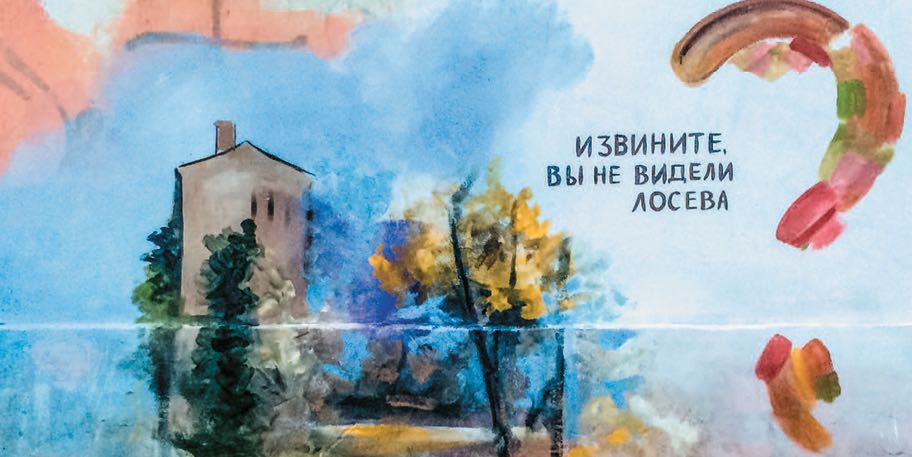
Sorry, have you seen Losev?
Excuse me, have you seen the initiative?
It may appear that only the local authorities may be blamed for the gap between the state and the citizens. The temptation to do so is great, but that would be incorrect. For example, in 2015 the city hosted the first festival Sorry, have you seen Losev? The festival was dedicated to Victor Losev (1926-1995), an artist who worked on the streets of Volgograd. Losev, a legendary man with an impressionist style and creative vision, was not very appreciated in the Soviet Union. The artist kept his works in the basement of a store. In 1969, the manager of that store decided to vacate the building and ordered the workers to take out the paintings and burn them. More than 300 works of Losev were destroyed in a fire. After that, the artist decided that his work would be more safe in the hands of the townspeople. All his creations he sold, changed for food and clothes, or simply donated to people he liked. After the fire, Losev created 3000 paintings, on which he captured Volgograd in completely different manner that the usual monumental and harsh way. He painted a sunny and bright city. In memory of the artist, during the festival Sorry, have you seen Losev? Contemporary artists gathered in the streets, following Losev’s example, by drawing landscapes or portraits of peoples. The event was well received, thousands of people took part in it in the festival that was funded by a grant. But when the next year the organizing committee tried to raise funds among the citizens themselves, only a very few supported the festival. According to festival-organizer Dmitry Grushevsky, the problem lies in the passivity of people: ‘We need to rebuild the thinking of the citizens. They complain about life, but do not want to make efforts for the sake of change,’ he says.
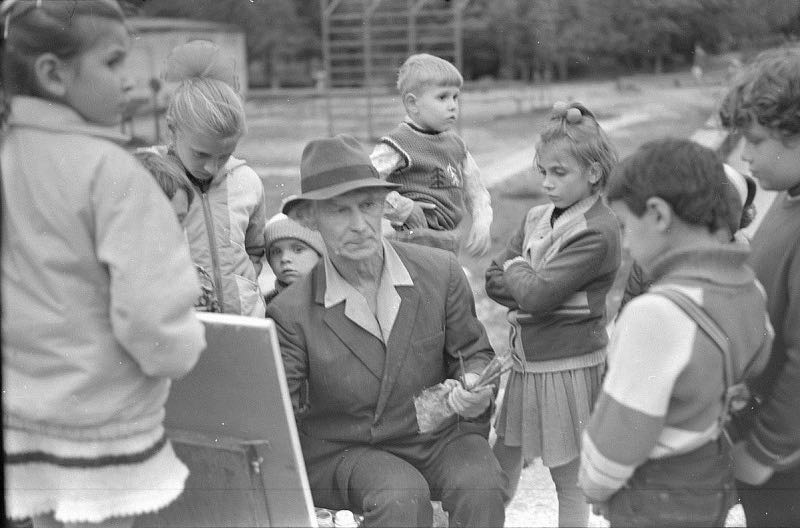
Viktor Losev at work in the streets of Volgograd
Genius loci: living with the past
In culture there is such a thing as genius loci, a concept derived from the Roman mythology. Genius loci has lost its specifics and now simply refers to the atmosphere of the place. One thing has not changed since ancient times: genius loci cannot be created artificially, it cannot be chosen. Volgograd is indeed a places where historical events of irresistible force set a certain atmosphere. The citizens doesn’t choose the war that is omnipresent, they just have to live with the war. The people still find unexploded shells or relics of killed soldiers in the neighbourhood. The military agenda has also dominated the urban culture for more than seven decades.
Ignoring that is like denying an injury of a physical disabled person. But for disabled people you can still create an more comfortable environment. While constantly talking only about the past, it’s impossible to develop the city further. The people feel that subconsciously. On the other side, it is difficult to change the image of the city for two reasons. First. After several generations the great battle is still emotionally close to everyone. So people are afraid to betray, albeit unintentionally, the memory of their heroic ancestors. Second. New meanings and symbols never arise on their own, but always as a result of human action. But most citizens are not yet in a hurry to take initiatives, on the contrary, they prefer the role of passive spectators, who meticulously smoothed out all the new things and find faults in everything.
So for the time being, Volgograd remains a place marked by the most massive battle of the bloodiest war of the last century, a city in an eternal search for oneself. Maybe this incessant struggle is the main, true and real identity of Volgograd. Stalingrad fought 75 years ago with the German Wehrmacht. Right now Volgograd is fighting the laziness and lack of initiative of its own inhabitants. Will the city be able to win a great battle again, as it once did in the past?

